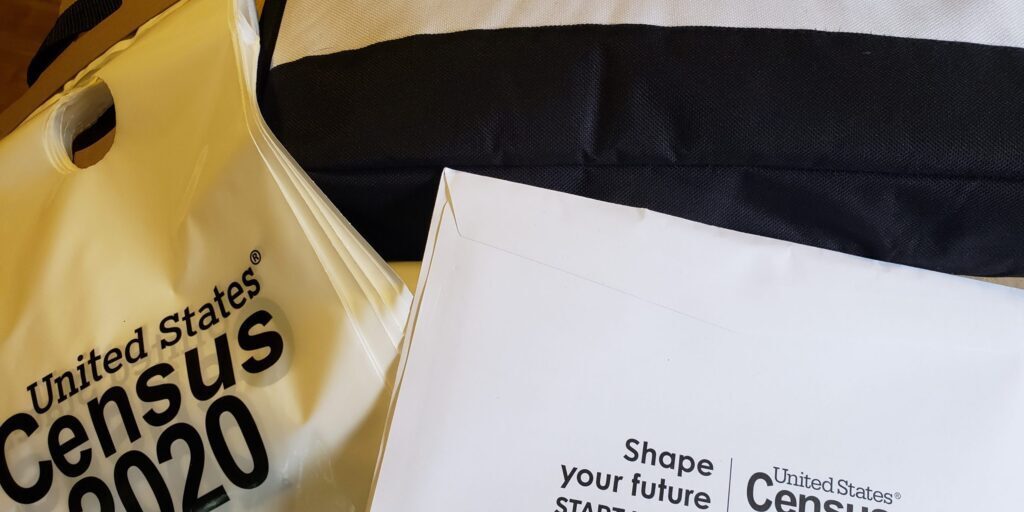A handful of enumerators in rural Alaska are running out of time to count the tens-of-thousands of people living off the road system. But Census officials say the 2020 Census is transitioning into the next phase which will follow up with those who have yet to be counted.
Update leave is the name of the counting phase some rural Alaskan communities are in, as Sue Steinacher, one of the two Census workers based in Nome, explains.
“What this means (is): we’re traveling around with laptop computers that have the whole mapping system for Nome in them. And we are confirming where the residential homes and units and apartments are and adding any new ones; so that’s the updating part, we’re updating the map. The leave is simply once we’ve entered the code for each unit, we leave the Census form in a plastic bag on the door knob or wherever we think they’ll (the residents will) see it.”
The COVID-19 pandemic has created extra challenges for the 2020 Census, even as the government moves forward with their plan to release final counts in the spring of 2021. Steinacher says she is concerned about how many rural Alaskans will actually get counted.
“Because we are not actually knocking on people’s doors and completing the questionnaire with them. We are asking them to take this questionnaire that we have delivered, and to complete it. They can either go online and complete it or they can complete it and mail it back in a paid return envelope.”
Earlier in the year the Census planned to count rural Alaskans in person, by going door to door with enumerators. But now, the Census’s Tribal Partnership Specialist for Alaska, Donna Bach, says they are relying on this updated leave process to count people during the summer subsistence season.
“Which impacts a lot of the regional hubs similar to Nome – like Bethel, Utqiagvik, Kotzebue; those are considered update leave areas where we know a lot of Alaskans generally receive their mail through a PO box. They fall into a special enumeration category because most people don’t receive their mail at a physical address.”
For these update leave areas across Alaska, local Census workers have until July 6th to count their entire community in person. Danielle Slingsby, the other Census worker in Nome, is almost certain they won’t meet that deadline locally.
“So we’re trying to educate and advocate to as many people as we can to say it is likely we are not going to get to everyone, it is highly possible, in fact I can guarantee it, that we will not get to everyone. But please still respond! Take it upon yourself to say this is my duty, I need to do this, because if I don’t then our community is going to be undercounted and we are going to get less funding as a community.”
Bach expects that more Census workers will be employed in rural hubs like Nome later on this summer as the Census is currently accepting more job applications for enumerators.
Regardless of how many people are counted by next week’s deadline, the Census will transition into the next phase called nonresponse follow-up. Bach explains this is only meant to count people who have not responded to the Census.
“For the effort in Nome for example, I know that there were two local enumerators who were participating in the update leave phase. And for those households who did not receive a direct invitation to the Census, they will have an opportunity to participate throughout the nonresponse follow-up phase.”
The nonresponse follow-up phase in Alaska starts in August and lasts until October 31st. Again, Bach reiterates this nonresponse follow-up phase is only for those residents who have not filled out a Census questionnaire online nor the paper document left on their door.
According to Bach and the Census website, regional communities in remote areas throughout the state have already been counted, for the most part. However, they had to rely on tribal leaders in those communities instead of hired Census workers.
Bach notes there are still about 15 villages in Alaska that have yet to be counted, but those are expected to be completed this week.
As of Thursday, Bach says less than 50% of Alaskans [47.8%] have responded to the Census questionnaires, which includes only about 17% of Nome’s population.
Image at top: 2020 Census materials distributed by this year’s enumerators. Photo from Davis Hovey, KNOM (2020).




